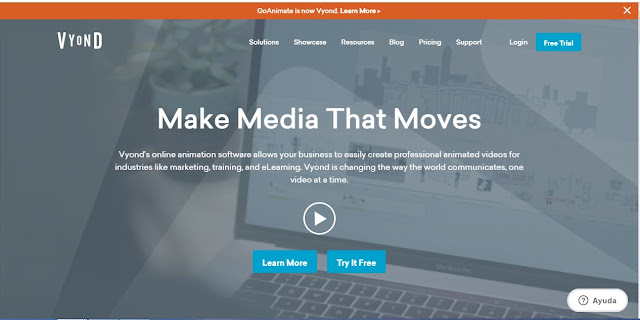Enhanced Lesson Plan with Technology
Enhanced Lesson Plan
Communicative Goal: Expressing quantity
Grammar Focus: Countable & Uncountable Nouns (Difference)
Vocabulary Focus: Food items
Recycled Language: Places and activities in town
Group: 5th grade
Level: Intermediate
ACTIVATION (5 mins)
The T will bring two plastic bags with different pieces of paper. In one
plastic bag there will be places such as library, supermarket, hospital and so
forth. In the other one, there will be different activities that are normally
carried out in those places. One of the children will take one piece of paper
of each bag and the T will ask questions related to the places and activities.
T: Hi guys!! How are you today??
Sts: Fine, bien!!
T: Okay, look! I have a plastic bag here with little pieces of paper
inside. You will take one and read it. (As the T takes one piece of paper of
each bag...) For example, here I have “Buy food” and here “School”. So tell me,
do we buy food in the school?
Sts: No!!! No!!
T: Okay!! What do we do in the school?
Sts: Study!! Read!!!
T: Excellent!! Okay so now I need a volunteer to take one piece of paper
of each bag! Who wants to start?
COMPREHENSION & CLARIFICATION (10
mins)
The T will
bring some ingredients so as to illustrate the difference between countable and uncountable nouns together with the help of the text as well.
Pita Pizza
_ You need to
have these ingredients to do this
delicious pizza:
-
6
pita breads
-
Some
tomato sauce
-
Some
mozzarella cheese
-
3
small tomatoes
-
5
black olives
-
Some
oregano
Some
olive oil
Whiteboard synopsis
COUNTING THINGS
Countable things Uncountable
things
_ Three small
tomatoes _ Some tomato sauce
_ Six pita breads _ Some olive oil
_ Five black olives _ Some oregano
APPLICATION
Activity 1: Choose your place and find the elements!
From the places discussed in the activation, sts will have to choose one of those places and make a list of the frequent elements, objects found in those places. The class will be divided into groups of 4 sts and each will have a different place.
Activity 2: Time to create!
Once the sts have chosen their places, the T will show sts a tutorial about Glogster in order to be used in later.
Tool Page: https://edu.glogster.com/
After going through the tutorial, sts will have to create a poster including the different elements found in the places they already chose and dividing them into "Countable" and "Uncountable". Then, the different groups will share their Glogs with the other ones.
Theoretical framework
SAMR Model
The SAMR Model was created by Ruben Puentedura. SAMR satands for Subtitution Augmentation Modification Redefinition. This method offers a way of seeing how computer technology might impact teaching and learning. The important concept is the level of the students´ engagement.
In this case, all the stages are present:
_ Substitution takes place since the same infomation could have been printed and offered to the sts. _Augamentation is present since technology offers an effective tool to perform the tasks and, taking into account that the feedback is immediate, the sts can be more engaged in learning.
_ Modification is also present since the common classroom tasks are accomplished and enhanced by the use of technology. This aspect is also present due to the fact that sts work in a computer classroom where the T is able to provide feedback and help them when needed.
_ Redefinition is also present since technology allows sts to perform new tasks that would have been impossible to be carried out without it. In this sense, technology also allows collaborative work, participation and group achievement.
PLANIED
Planied (Plan Nacional Integral de Educación Digital) is a Digital
Competence Framework implemented by the Ministry of Education in 2015. Its aim
is to promote digital literacy in every school and, for such purpose, it
proposes six dimensions needed for a person to be considered digitally
competent.
- Creativity and innovation
- Communication and collaboration
- Information and representation
- Responsible and solidary participation
- Information and representation
- Responsible and solidary participation
- Autonomous use of ICTs
Throughout the lesson the different dimensions are tackled:
_ For instance, creativity and innovation will be key to the what next section of the lesson. The students will be creating a poster by choosing different images, words, templates and so forth.
_ For instance, creativity and innovation will be key to the what next section of the lesson. The students will be creating a poster by choosing different images, words, templates and so forth.
_ Then, communication an collaboration is
achieved in the activation stage and also during the creation of the poster since sts work in groups.
_ Information and representation is present while sts investigate about their places and then create a poster of the material they managed to gather.
_ On the last stage, sts will be dealing with the autonomous use of technology since they are creating their own product.
Bloom´s Digital Taxonomy
_ Information and representation is present while sts investigate about their places and then create a poster of the material they managed to gather.
_ On the last stage, sts will be dealing with the autonomous use of technology since they are creating their own product.
Bloom´s Digital Taxonomy
Bloom’s Digital Taxonomy (an updated version of the original Bloom’s Taxonomy) seeks to help teachers design lesson plans in which technology is used as a tool that takes students from lower to higher order thinking skills. According to this hierarchy, there are 6 levels of cognition expressed through verbs: remember, understand, apply, analyse, evaluate and create.
In the lesson plan, the sts are in charge of creting their own posters and then sharing them with the other classmates. However, before sts start working on the final task, they inevitably need to first understand and remember the examples brought by the teacher so as to use that information in new situations (applying). Then, sts have to analyze by drawing connections among ideas and determining how the element they choose interrelates to the overall structure and purpose. Finally, sts have to evaluate by justifying their decisions and, as mentioned before, they are creating something new(creating is Bloom's highest thinking skill-following Bloom´s digital taxonomy).
References
_ Consejo Federal de Educación. Nucleos De Aprendizaje Prioritatio Lenguas Extranjeras. e.edim.co/92818/NAP_LE.pdf?
_ Sneed, O. (2016, May). Integrating Technology with Bloom's Taxonomy. Retrieved August, 2019, from https://teachonline.asu.edu/2016/05/integrating-technology-blooms-taxonomy/
_ Consejo Federal de Educación. Nucleos De Aprendizaje Prioritatio Lenguas Extranjeras. e.edim.co/92818/NAP_LE.pdf?
_ Sneed, O. (2016, May). Integrating Technology with Bloom's Taxonomy. Retrieved August, 2019, from https://teachonline.asu.edu/2016/05/integrating-technology-blooms-taxonomy/




Comentarios
Publicar un comentario